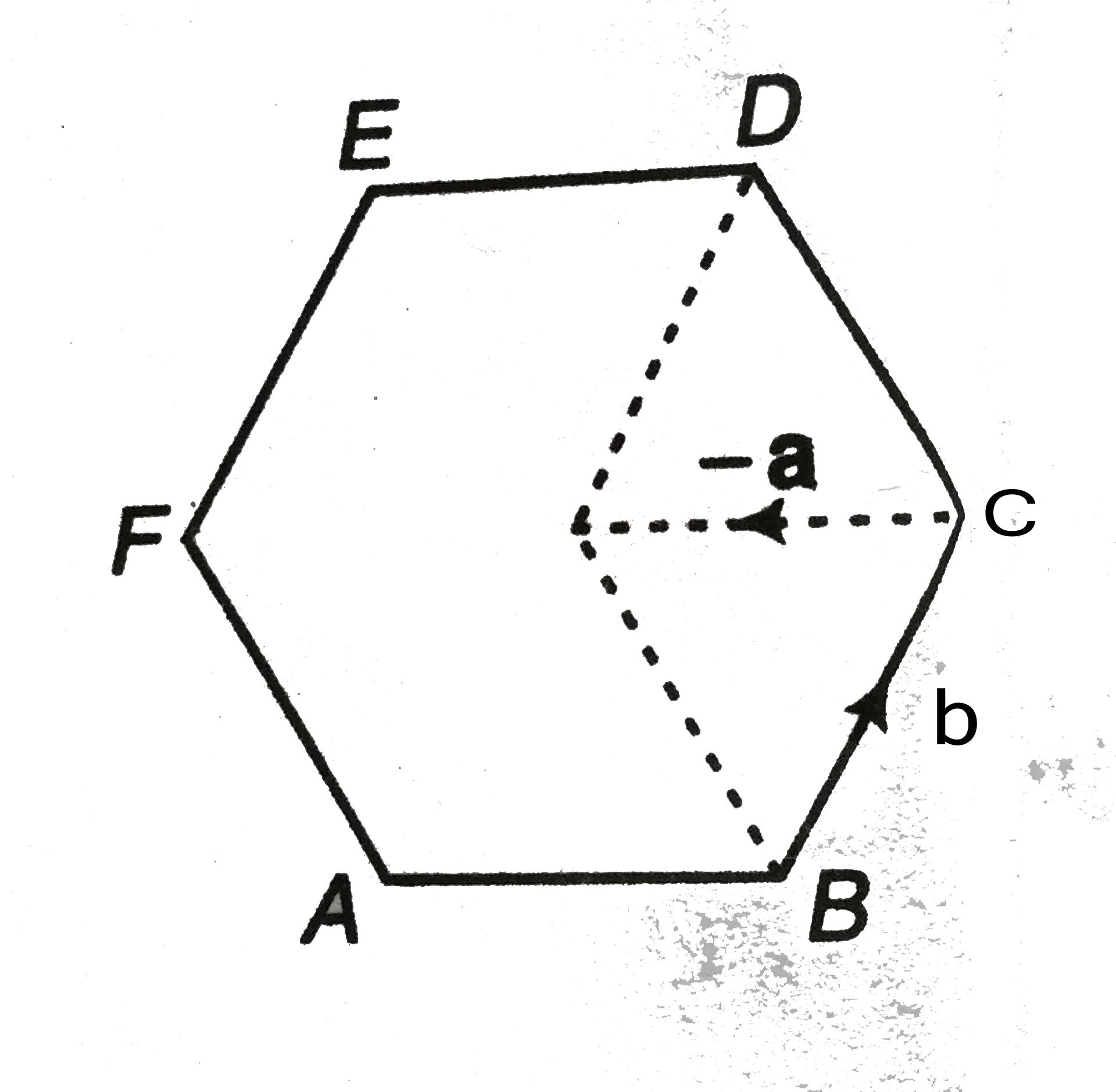If a and b are the vectors AB and BC determined by the adjacent sides of a ragular hexagon. What are the vectors determined by the other sides taken is order?
Given AB= a and BC = b
form the method of vector addition (or subtraction) we can show that,
CD=b−a
Then DE=−AB=−a
EF=−BC=−b
and FA=−CD=a−b
 .
.
Topper's Solved these Questions
- VECTORSBOOK - DC PANDEYCHAPTER - VECTORSEXERCISE - Exercise 5.1
5 Videos
- VECTORSBOOK - DC PANDEYCHAPTER - VECTORSEXERCISE - Exercise 5.2
4 Videos
- UNITS, DIMENSIONS & ERROR ANALYSIS BOOK - DC PANDEYCHAPTER - UNITS, DIMENSIONS & ERROR ANALYSIS EXERCISE - Medical entrances gallery
32 Videos
- WAVE MOTIONBOOK - DC PANDEYCHAPTER - WAVE MOTIONEXERCISE - Integer Type Question
11 Videos
Similar Questions
If →aand→b are the vectors determined by two adjacent sides of a regular hexagon, what are the vectors determined by the other sides taken in order?
View SolutionIf →aand→b are the vectors determined by two adjacent sides of a regular hexagon ABCDEF, find the vector determined by the ther sides taken in order. Also find −−→ADand−−→CE in terms of →aand→b.
View Solution
Knowledge Check
¯a,¯b are vectors, ¯¯¯¯¯¯AB,¯¯¯¯¯¯BC determined by two adjacent sides of a regular hexagon ABCDEF.The vector represented by ¯¯¯¯¯¯EF is
A¯a−¯bB¯a+¯bC2¯aD−¯bIf ∣∣→a+→b∣∣=∣∣→a−→b∣∣ then the vectors →a and →b are adjacent sides of
Aa rectangleBa squareCa rhombusDnone of theseThe vector A=3i−k,b=i+2j are adjacent sides of a parallelogram . Its area is
A12√17B12√14C√41D12√7
A regular hexagon has a side 8 cm. Determine its perimeter and area.
View SolutionIf ¯a=¯¯¯ABand¯c=¯¯¯BC are two adjacent sides of a regular hexagon ABCDEF, Find the other sides in vector form.
View SolutionIf a, b, c be the vectors represented by the sides of a triangle taken in order, then a+b+c=0
View SolutionIf →a and →b represent two adjacent sides of a parallel then write vectors representing its diagonals.
View SolutionThree coinitial vectors of magnitudes a, 2a and 3a meet at a point and their directions are along the diagonals if three adjacent faces if a cube. Determined their resultant R. Also prove that the sum of the three vectors determinate by the diagonals of three adjacent faces of a cube passing through the same corner, the vectors being directed from the corner, is twice the vector determined by the diagonal of the cube.
View Solution
